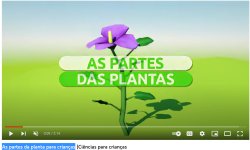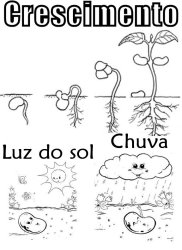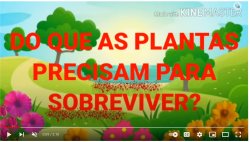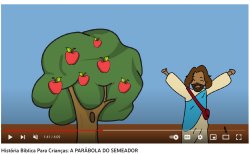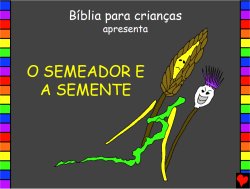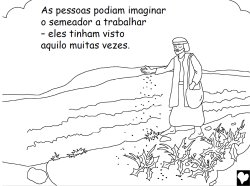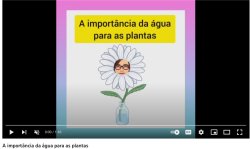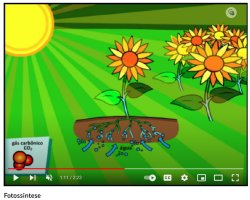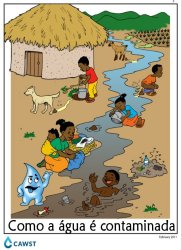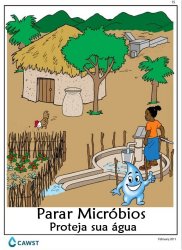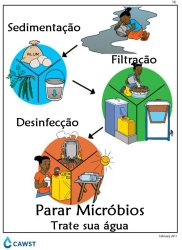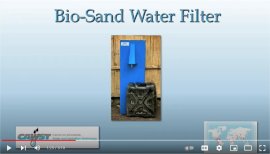
|
 Contact UsGrow and Go English TrainingEvangelismo InfantilCrescer e Ir CurrículoGota de Esperança
English Humanitarian Arm
Currículo da UCT |
casa>>crescer e ir >>
Crescer e Ir GROW AND GO AN INTRODUCTION TO GROWTH IN THE NATURAL AND THE SPIRITUAL - (To be translated into Portuguese)
|
Remember the children learnt that they all require different types of soils, water, sunlight, time and just the right temperature to flourish and grow. Botanists will tell you that the soil determines the health and strength of a plant. The better the soil, the healthier, the more fruitful and stronger the plant will be.
In Jesus' story, the seed represents the word of God and the soil represents the people who hear the word. Many times people hear the word of God, but they don't understand it. They don't take it in. That is like the seed on the footpath. The evil one comes and takes away the seed that has been planted in their heart before it has the opportunity to grow in their life. The seed that fell on rocky soil represents those who hear the word and receive it with great joy, but when the newness wears off and the excitement fades, they drift away because they don't have deep roots. The seed that fell among the weeds represents people who hear God's word and believe what it says, but soon the message is crowded out by the worries of life and the desire to get more stuff. If seed is planted in a bunch of weeds, the weeds will soon take over! A person who hears God's word, tries to understand what it says and put it into practice in their daily life is like good soil. In good soil, the seed takes root and grows and produces a plentiful harvest. That is the kind of soil that Jesus wants us to be. What kind of soil are you?
Water is vital to the seed because it's what helps it absorb nutrients from the soil and it's what helps it germinate. Seeds do this by absorbing the water and breaking through the shell to take root. That is why in this Series we have an entire Portuguese 'Grow and Go Water Series' The sunlight provides the warmth and the energy needed for the seed to grow and develop.
You will learn all about light and the Light of the world in the Portuguese 'Grow and Go Light Series' Time is essential for germination and growth. Time is a process. You can't slow time or hurry it up; it goes at its own pace and allows the seed to germinate, develop and grow, until it reaches full growth and becomes fruitful itself. Finally, temperature is important in the germination process. If a seed is in an environment lacking the right temperature its chance of success is severely limited, even if all the other elements are present. If it's too hot, it will dry up and if it's too wet, it will rot. Both extremes will result in the seed's death. All of these ingredients are essential, if the seed is to unlock the full promise and potential it carries, and if it is to develop into what it is meant to be. The same is true for the Christian. We need certain ingredients if we're to develop and grow and become fruitful and mature. You will learn more in our Portuguese 'Grow and Go Spiritual Growth Series' Remember for our Christian growth we also need light ...
Make sure you are getting the Word in you, so you don't fall for the wrong things or get sucked into error. Hide the word of God in your heart so that you won't sin against Him (Ps 119:11). A Christian also needs water. Why is it important? Because first we come to Christ, repent of our sins, and are water baptized. Water baptism is essential for every believer. It's not what saves you, but it's an act of obedience that seals your salvation. But then it's the Holy Spirit who works salvation in our hearts. For me, water is a picture of the Holy Spirit. The Holy Spirit reveals things in the Word to us. The Holy Spirit teaches us. The Holy Spirit guides us and it's the infilling of the Holy Spirit that gives us the power to live this Christian life out. He is essential to the fruitfulness of every Christian. It's over our entire lifetime that the Christian blossoms and grows into the person God intends and plans for them to be. Through time, God is able to remove the old and release the new into us. We are changed from one degree of glory to the next. It's little by little, so be patient in the process.
Every seed carries within it all the potential and promise of what it can become - Christ First Next session we will start our Portuguese 'Grow and Go Water Series' Introduction to BioSand Filter WaterTeaching:
This teaching will be introduced into the schools that will be supplied with our BioSand Filters compliments of ABCD in Africa and UCT in the Caribbean especially in Haiti. This weekly BioSand Filter teaching will involve educating the children all about the BioSand Water Filter, using PowerPoints and Visual Aids as well as videos and Handouts not only in English but in French and Creole for DR Congo and Haiti and Swahili for East Africa, to help them understand the importance of personal hygiene and water sanitation.
The consequences of unsafe water, sanitation and hygiene (WASH) on children can be deadly. Over 700 children under age 5 die every day of diarrhoeal diseases due to lack of appropriate WASH services. In areas of conflict, children are nearly 20 times more likely to die from diarrhoeal disease than from the conflict itself. Water, Sanitation and Hygiene (WASH) | UNICE
Key Message: Water can be contaminated in many ways . Possible Questions: • Where does the water come from? • What does it mean when we say that water is contaminated? • What are the possible sources for water contamination? • Are humans the only ones contaminating the water? • Where do the people dispose of faeces? • Is it alright to defecate anywhere? • How can we protect the water that we use? Content: Water that contains microbes and other pollutants is contaminated. Human and animal faeces are the main source of water contamination. Water is contaminated when people and animals defecate in an open field or near a water source and when latrines are not properly used and maintained. The faeces get into the water and are spread to everyone who uses that water. Contaminated water can come through rivers, streams, wells and is carried to our homes in pipelines and buckets. Water can also be contaminated when: • Containers for storing water are not cleaned properly • Water storage tanks are not covered to protect against contamination • The bucket and rope that are used to pull water out of the well were in contact with something dirty (hands, animals, ground) Water can look dirty when it is contaminated, but even clear water can contain microbes that cause illness. Not all sources of water are good quality water. Rainwater is pure when falling from the sky, but may become dirty when landing on the roof. Groundwater can be of good quality, but may be contaminated with chemicals or latrine waste. Surface water is of poor quality because there are many so ways it can become contaminated. Check for Understanding: • Explain, in your own words, what contamination means. • Which sources of drinking water are easily contaminated? • Why are these water sources easily contaminated? • If you get water from a well, can microbes get into that well? How? • How can garbage contaminate our water? • What are some other habits that can lead to contamination of water? • If the water is clear, could it be contaminated?
Key Message: There are ways to protect our drinking water from contamination. Possible Questions: • Are there any activities you do to protect your water source? • Do you use a container to collect rainwater? • If yes, what type of storage container do you use? • Do you use a tapstand, well or pump to get your water? • If yes, is the well covered? • Does the pump or tapstand have a platform? • Is there a place for wastewater to go? Content: We have to protect our drinking water from contamination. To protect our water: • Keep a protected and covered well • Build a platform under the pump or tapstand • Build a channel to divert wastewater • Build a soak pit for wastewater • Protect your spring by building a catchment box • Collect rainwater in covered tanks • Use a clean rope and bucket to pull water out of a well • Keep animals away from our water sources by using fences • Maintain a separate area for animals to drink • Take care of the yard and general environment around the house • Protect the source of water by planting trees along creeks and rivers • Maintain a well forested area above your water source If we do these things, the quality of the drinking water that we consume will be better, but we still may have to treat the water to make sure it is safe to drink. Check for Understanding: • How can we protect our water sources? • What should we do with wastewater from our water source? • How do we protect our spring sources? • How should rainwater be collected and stored? • Why do we cover wells? • Why should we have a platform underneath a pump or tapstand? • Why would we use a soak pit?
Stop Microbes - Treat Your Water Key Message: Contaminated water can be treated to make it safe. Possible Questions: • Do you treat your drinking water? • Have you heard of any ways to treat your drinking water? • Are you satisfied with your drinking water? Content: It is important to treat your water to ensure that it is safe. Treating our water helps remove microbes which make us sick. Water can be treated in several different ways. Some ways are easy or fast but other methods can be hard and more expensive. Which ever way is used to treat water, it must be done well and correctly. If it is done correctly and consistently, you should always have good water to drink. The first step in treating your water is to perform sedimentation. When our water is dirty we need to sediment our water. Microbes like to stick to sediment, so by removing the sediment we are removing microbes. We can sediment our water using seeds, prickly pear cactus, or chemicals. These will help remove sediment and make the water more clear. After sedimentation, it is necessary to filter our water to remove more microbes. We can filter our water using many methods. Some methods of filtration are straining the water with cotton cloth, using a biosand filter, or using a ceramic filter. Although the water may look clear after filtration, it is still necessary to disinfect our water. Disinfection can be done by boiling, adding chlorine or using solar disinfection (SODIS). If we have performed all three steps, we know that our water is safe to drink. There are different treatment methods, so we can choose which way is best for our family. Check for Understanding: • Why should we treat the water? • What are the three steps to treat our water? • If our source water is clear, can it still make us sick? • How do you remove microbes? • Why are there different water treatment methods?
Next session we will start our Portuguese 'Grow and Go Water Series'
GROW AND GO CURRICULUM
A DROP OF HOPE
SOWING SEEDS OF SUCCESS - MORINGA CURRICULUM |
| Copyright © 2024 www.UnitedCaribbean.com. All rights reserved. Disclaimer Click to Contact us |
